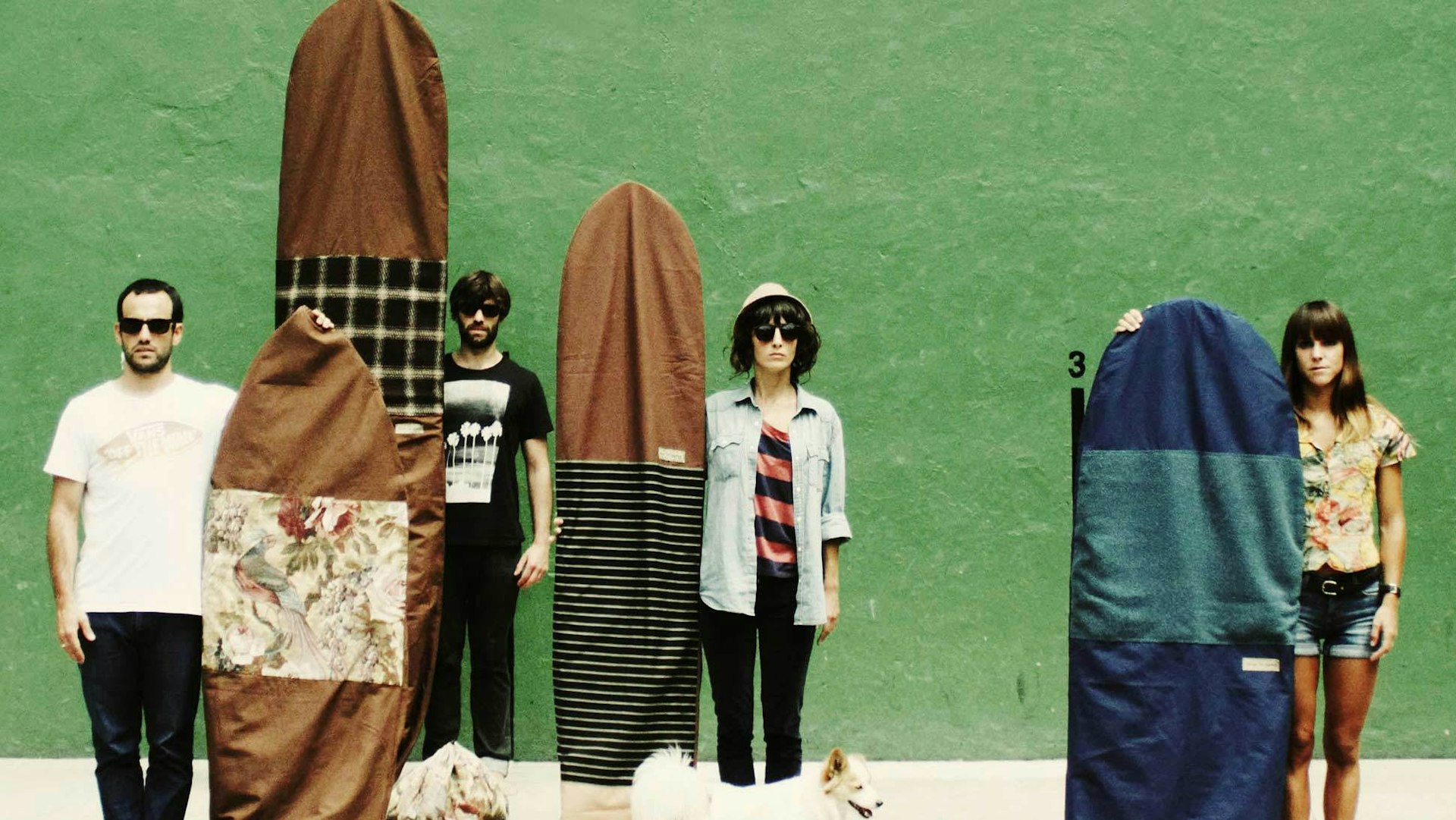
Modern Artisans
HUCK meets some of the people out there who are putting their own distinctly hand-crafted spin on the production of ‘things’.
Miscellaneous Adventures
Ever since he was a kid, illustrator Andrew Groves has been whittling objects from wood. “My dad taught me the basics and the rest I taught myself by having a go,” he says. “I grew up in a household where things were always being made.”
Andrew continued to nurture this love of craft into his adult life, painstakingly shaping his own surf and skateboards, and eventually started making mini wooden wares inspired by his love for the great outdoors.
“Miscellaneous Adventures started quite organically,” Andrew says. “I do a lot of camping and hiking and I found myself wanting to make things for my adventures. I started making things like spoons, slingshots and cups for myself but I ended up making so many that I thought I’d sell them.”
From his barn in West Sussex, where he lives with his wife, Andrew carves each utensil out of locally sourced, sustainable wood. He incorporates illustration into each one-of-a-kind piece, but says his work is a celebration of creativity, not a protest against factory lines. “I’ve got no real problem with mass-produced goods, as there’s a definite need for them,” he says. “I just love making things and I like the idea that my objects have their own story or special characteristics.”
While Miscellaneous Adventures is still a fresh project, Andrew already has ideas of how he’d like it to grow. “In the future I’d like to run courses so that I can teach people how to make things. I’d like to bring people to the woods, sit around a fire, carve and have a really nice time.” Andy Tweddle
The Community Kite Project
A canopy of rainbow-coloured polygons hang from the ceiling of Space Fiftyfour in Shoreditch, London, as the launch night for The Community Kite Project gets underway. Downstairs, kite-making materials like ribbons, string, paper and fabric lie ready for workshops that will take place over a week.
This is the vision of maker/designer Christopher Jarratt, famous for his sustainable furniture company sixixis (2005-08), artist Jo Peel and social designer Tom Tobia. The three friends have come together to create a festival of kite-making and anyone can come and get involved for free. “It’s nice to do something where we can bring all kinds of people together and make something away from computers,” says Jo. “We want to get people using their hands and remind them of how things are made and where they come from.”
But why kites? “It’s just about getting outside, understanding the weather and thinking about things that are bigger than you,” says Jo. “It’s good to walk through the streets looking up for a change.” Citing the popular kite culture in Afghanistan and India as an inspiration, the trio are working with Sayamimdu Dasgupta from MIT’s Media Lab to deliver a video workshop on Indian fighting kites this coming week.
“Kite flying across the globe is synonymous with freedom, the outdoors, imagination and possibilities,” says Jo, who also helped facilitate special artist collaborations with the likes of Will Barras, Kid Acne and Telegramme. “We hope to bring a slice of this free-spirited pastime to the good people of inner east London.” Shelley Jones
Sew ‘n Sing
Living the dream, sticking it to the man, walking to the beat of your own drum: the ladies behind sew ‘n sing have it all chalked out – chalked, patterned, scissored and sewn up. Eli and Erika started designing custom surfboard bags almost two years ago. Wetsuit bags followed and now they’re collaborating with shapers and illustrators, glassing sew ‘n sing fabric into the surface of boards. Pretty nifty, huh?
But how did surf meet craft in this artistic way? “We’ve always been super passionate about surf and fashion,” says Eli, “and when Erika’s boyfriend, Jokin, asked her to make some stylish board bags for all his different boards, we liked them so much we decided to make more!” With a lack of distinctive board bags on the market, Eli and Erika saw the opportunity to offer surfers an authentic and unique way to customise their shred.
They may not have learnt to sew professionally, but doing things DIY was just second nature to these creative donostiarras, who still call San Sebastian home. “We come from families that sew,” confirms Erika. “There was always lots of patterned fabrics around the house when we were kids.” And now the girls are building on their textile success and collaborating with French artist and shaper Benjamin Jeanjean through RVCA.
So, is it their self-made lifestyle that fills them with song? “We both sing, but you don’t wanna hear us,” laughs Erika. “We find working with music very inspiring. The Spanish say, ‘Coser y cantar’ (‘Sew and sing’) – it’s a very old expression that means that things are easy when you enjoy them.” Rachel Surgeoner
Holloway
Throwing out the mass-production model and crafting by hand can open up a myriad of possibilities. Take Holloway, a boutique, Brisbane-based company that makes sunglasses from recycled materials like vintage wine barrels. Holloway was founded in 2011 by Raffaele Persichetti and Martin Gordon Brown, two product designers with a big respect for nature.
But in a world of sweatshops and cheap products, is it tough going against ‘the machine’? “The industry is ten percent aware of true design ethic and ninety percent ignorant to keep the machines running,” says Raff. “It’s a mould designed by the business-oriented institutions that teach product design. Marty and I spent a fair degree of our studies seeking external stimuli outside the classroom and I guess we just didn’t get caught up in the race for the next useless product design award.”
Holloway are committed to hand-wrought craft. “We’ve been in the machine age since the late 1800s,” says Raff. “[But] machines will never be able to produce the finish of handcrafted products or replicate the energy passed from the creator directly into the worked surfaces.”
With frames fashioned out of old electric guitars and a Jaguar timber car dash, the guys are racking up an impressive list of salvaged items. But there’s nothing gimmicky about their resourcefulness. “We are fighters for anyone who is using a localised model, sourcing local materials, local labour and manufacturing to suit the local market first,” says Raff. “It is possible to design for a better future. We’re driven to create essential products that are personal, unique and inspiring.” Rachel Surgeoner
